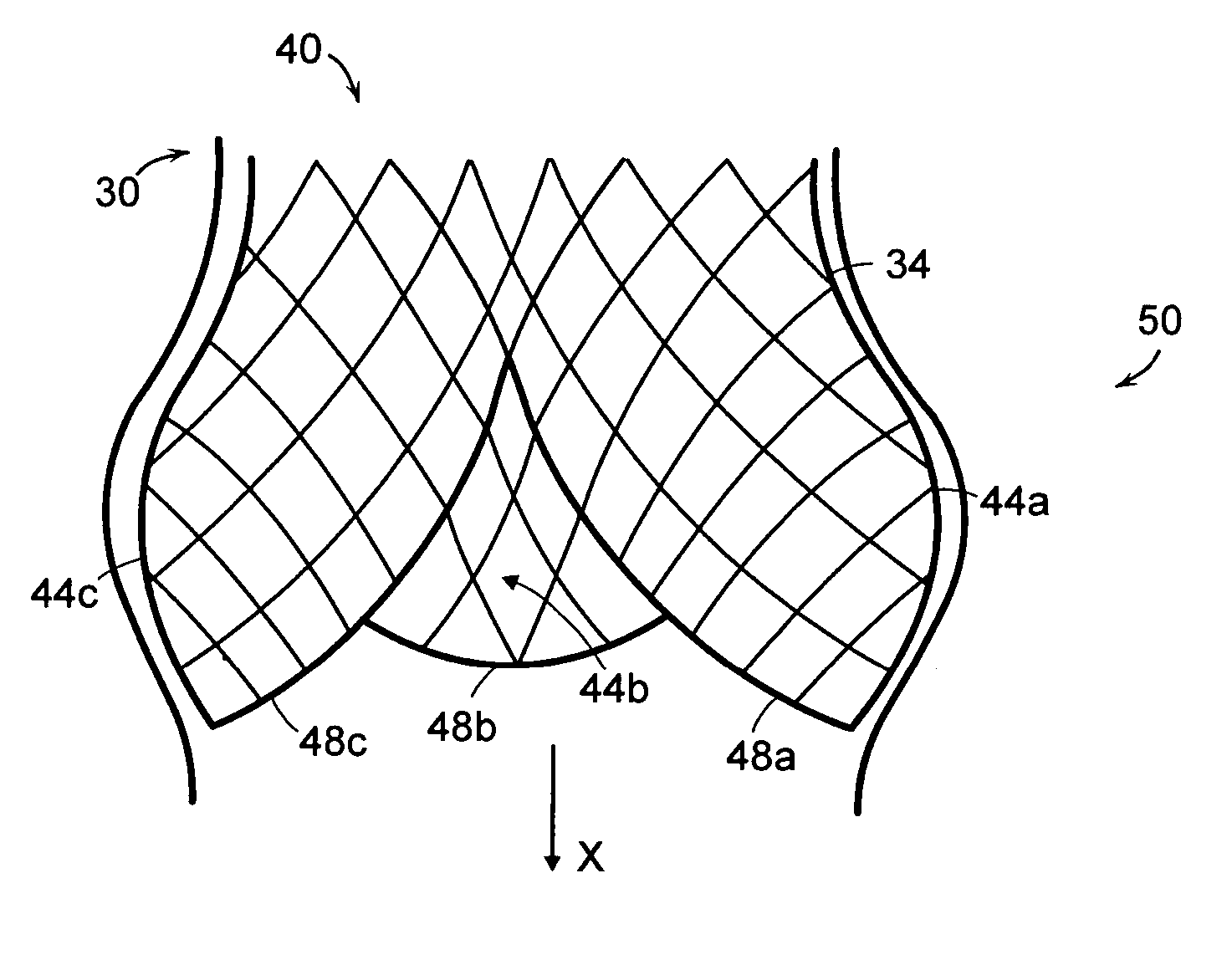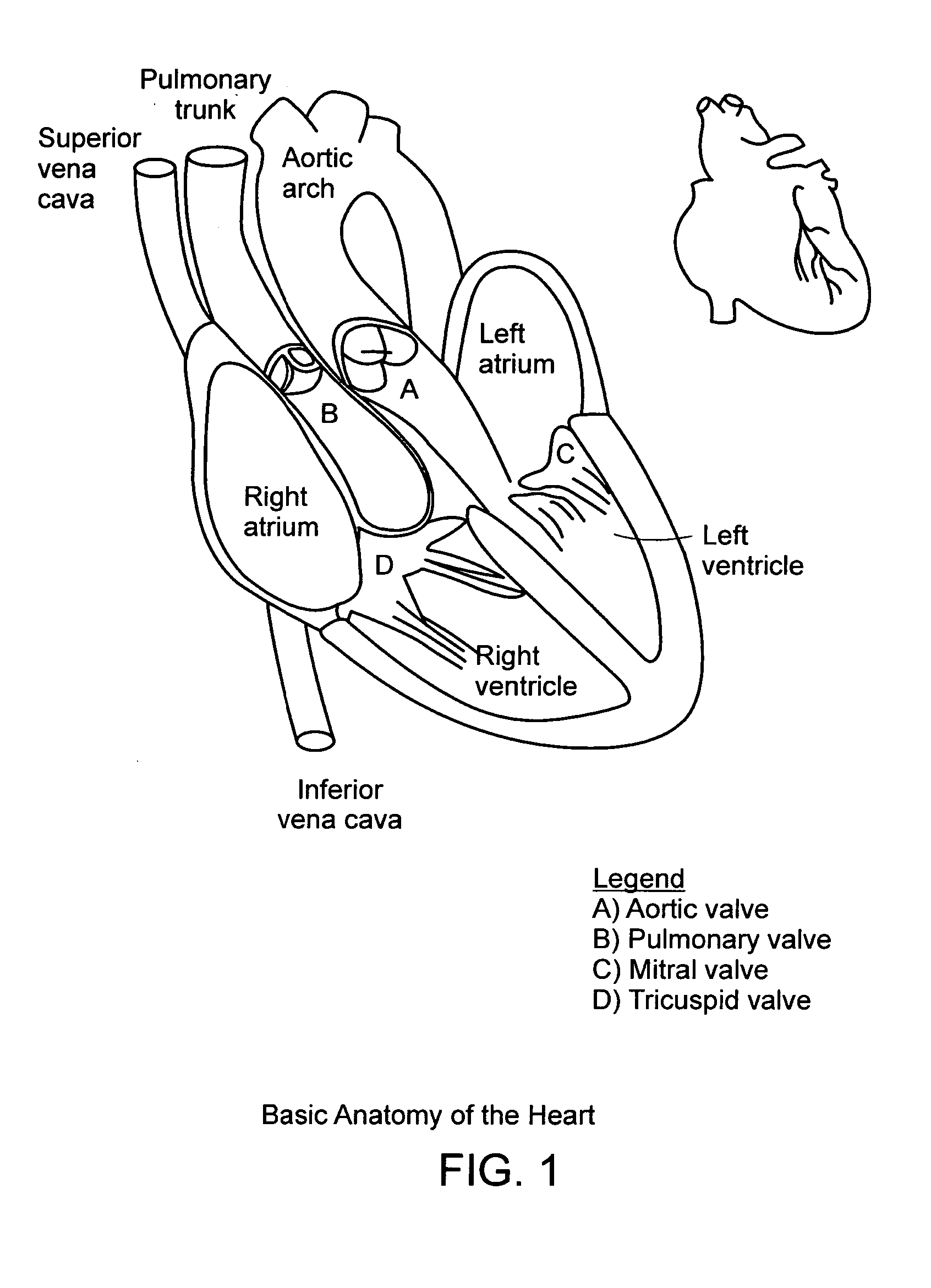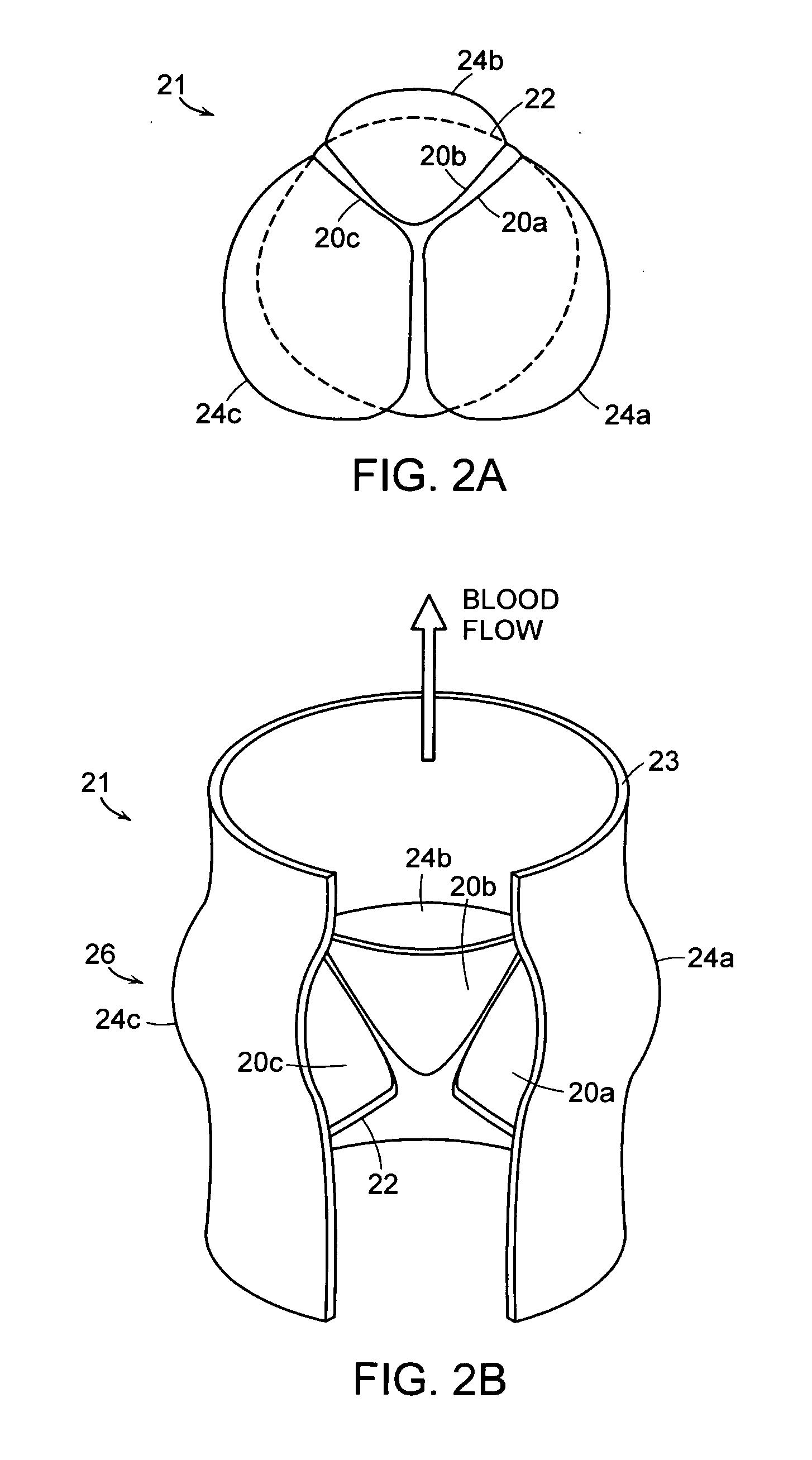Transcatheter delivery of a replacement heart valve
a heart valve and transcatheter technology, applied in the field of treatment of heart valve dysfunction, can solve the problems of pulmonary valve regurgitation, heart valve dysfunction, subsequent leaking of blood, etc., and achieve the effect of avoiding the morbidity of reoperation and being minimally invasiv
- Summary
- Abstract
- Description
- Claims
- Application Information
AI Technical Summary
Benefits of technology
Problems solved by technology
Method used
Image
Examples
Embodiment Construction
[0063] In brief overview and with reference to FIG. 1, the heart has four chambers and is located in the middle of the chest with a slight tilt toward the left side. Deoxygenated blood (containing low oxygen) returns from the entire body via the superior and inferior branches of the vena cava emptying into the right atrium. During diastole, or the relaxation phase of the cardiac cycle, pressure in the right ventricle falls from between about 20 mm Hg and about 30 mm Hg to between about 5 mm Hg and about 10 mm Hg. The pressure gradient formed between the right atrium and right ventricle, plus the contraction of the atrium, causes forward flow of blood through the tricuspid valve into the right ventricle. The flow of blood through the tricuspid valve thereby fills the right ventricle with blood. During systole, the pumping phase of the cycle, the right ventricle starts to contract, increasing intraventricular pressure. This causes the tricuspid valve to snap shut and the cusps of the ...
PUM
 Login to View More
Login to View More Abstract
Description
Claims
Application Information
 Login to View More
Login to View More - R&D
- Intellectual Property
- Life Sciences
- Materials
- Tech Scout
- Unparalleled Data Quality
- Higher Quality Content
- 60% Fewer Hallucinations
Browse by: Latest US Patents, China's latest patents, Technical Efficacy Thesaurus, Application Domain, Technology Topic, Popular Technical Reports.
© 2025 PatSnap. All rights reserved.Legal|Privacy policy|Modern Slavery Act Transparency Statement|Sitemap|About US| Contact US: help@patsnap.com



